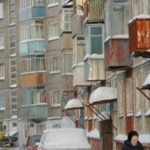 The movement of people, whether within a country’s borders or via international migration, causes inevitable concern from officials striving to ensure service levels are maintained as the population changes. While there are noticeable examples of depopulation around the world, the last few years has placed most emphasis on growth in numbers.
The movement of people, whether within a country’s borders or via international migration, causes inevitable concern from officials striving to ensure service levels are maintained as the population changes. While there are noticeable examples of depopulation around the world, the last few years has placed most emphasis on growth in numbers.
New research from Russia’s HSE University explores the role migration plays in the Moscow property market. Cities have become increasingly popular as the agglomeration effect has extenuated their impact on the national economy. This becomes self-perpetuating, as it attracts more people to live and work. Providing housing and other amenities for this burgeoning population is a persistent challenge, however.
People with different income levels understandably have different housing requirements, and typically buy or rent homes in different neighborhoods. This inter-city inequality determines how attractive the city is to migrants, as affordable housing is a key requirement for wood be migrants.
Housing patterns
The researchers utilized data on temporary labor migrants who had obtained permanent residence in Moscow, together with data on housing construction in the region and on the housing market itself.
The data revealed 877 multi-story residential properties with a combined housing area of 37.5 million sq. ft that were either under construction in 2015 or were already for sale. These were split across six concentric belts, half of which were in the core of the city, and the remaining half in the suburbs.
The data revealed that the most common buyers of properties in Moscow were people from reasonably large cities of around 100,000-250,000 residents. These people typically originate from major oil and gas regions, and have both the incentive and opportunity to relocate. People from smaller towns and rural areas seldom have sufficient money to move even to the suburbs of Moscow.
Instead, those people tend to move to a zone located some 30km from the city center, where approximately 70% of all new housing was built between 2015-2017. Another zone that’s approximately 25km away from the city center has also seen growth in inexpensive housing, with the suburbs the typical place of entry for new migrants.
Regulating growth
Studies of urban growth in the United States suggests that strict construction regulations influence the growth of cities, especially in terms of wages, house prices and migration flow. Similarly, Chinese studies also highlight the availability of affordable housing and migration into urban areas.
The researchers believe their findings are important as they shed fresh light on the spatial development strategy of both Moscow and the wider region. They believe that regulation of this zone around 30 km from the main Moscow Ring Road, holds the key to managing the migration into Moscow.
The vicious circle of investment in infrastructure attracting people, whose presence helps make the city increasingly attractive, which in turn helps to lure the next generation of migrants is a cycle that is familiar around the world, with obvious implications for the regions the migrants are leaving to head to the metropolises of the world.
It’s an area that clearly requires more attention if the fruits of growth are to be spread more equitably around the country, and geographic inequality doesn’t become a significant millstone around the necks of democracies the world over.